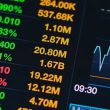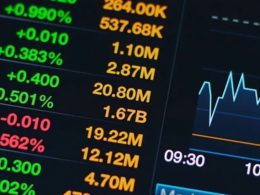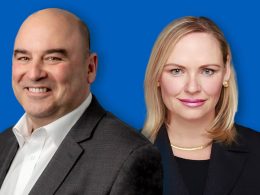The first quarter of 2025 delivered a sobering reality check for the U.S. economy, one that appears increasingly vulnerable to the effects of tariff policy and persistent inflation. In her most recent update,1 RBC Economics' Economist Carrie Freestone cuts through the noise with a focused assessment: the U.S. economy is slowing, inflation is still too hot, and the road ahead is likely to get bumpier.
“Today’s Q1 GDP print gives us an idea of the health of the US economy ahead of tariff whiplash and policy uncertainty,” Freestone writes. “And this starting point was broadly in line with expectations (-0.3% QoQ annualized vs. -0.2% consensus) for a weak start to the year.”
But behind that headline number lies a more nuanced story—one with surprising signs of resilience from consumers, but troubling inflation signals that threaten to prolong the Federal Reserve’s cautious stance.
Consumers: Resilient, For Now
Despite mounting economic headwinds, U.S. consumers showed more strength than anticipated. Consumption rose +1.8% QoQ annualized, adding 1.2 percentage points to the GDP headline number. According to Freestone, “Spending on durables fell off the back of a strong Q4 print (reflective of tariff front running). Nondurables and services spending held up – a sign that high income US consumers were not spooked by market volatility.”
That stability is a key theme. While soft data—including consumer sentiment—has shown signs of fraying, it hasn’t fully bled into hard economic activity yet. However, Freestone cautions that RBC remains “monitoring for signs of a slowdown in high income households moving forward.”
Trade and Tariff Front-Running Cloud the Picture
One of the key distortions in the Q1 data comes from trade. In anticipation of tariff hikes, businesses ramped up imports of consumer goods, autos, and parts. The result was a wider trade deficit that weighed heavily on growth. “A surge in imports drove the trade gap wider and this was only partially offset by a ramp up in inventories,” notes Freestone. That widening trade imbalance was a major factor behind the negative GDP print.
This tariff front-running is a signal that companies are scrambling to get ahead of expected cost pressures—a strategy that may distort both Q1 and Q2 figures and cloud true demand trends. While inventories did increase, Freestone emphasizes that the buildup “did not fully offset the widening trade gap,” limiting the upside potential for future quarters.
Inflation: Still Too Hot for Comfort
Perhaps the most concerning datapoint was inflation. Despite the cooling narrative that had begun to take root in early 2025, the Q1 figures painted a different picture. The GDP price index came in at 3.7%, while core PCE—arguably the Fed’s preferred inflation measure—was 3.5%, both of which were upside surprises.
“Quarterly deflators are still too hot,” Freestone writes plainly. “The story is clear: inflation was too hot even before Liberation Day came into play.” As such, the Federal Reserve’s hands may remain tied. Monthly PCE updates later in Q2 will likely take center stage, but the Q1 reading resets expectations that any imminent rate cuts are off the table for now.
Government and Investment: Muted Signals
On the fiscal side, government spending pulled back slightly in Q1, subtracting 0.3 percentage points from headline GDP. “Government spending slowed in Q1… and will likely continue to be of minimal support to growth moving forward as DOGE related pressures persist,” says Freestone, referencing constraints on discretionary outlays. However, RBC is “not baking in a meaningful decline in the deficit as of yet,” suggesting spending levels may remain flat but not contractionary.
Business investment provided a rare bright spot, adding 1.3 percentage points to GDP thanks largely to an expected surge in equipment spending. This uptick may reflect both catch-up demand and tariff-preemptive capital expenditures.
A Weak Starting Point for an Uncertain Year
The broader message of the report is caution. The economy entered Q2 with modest momentum and significant headwinds looming—particularly around inflation and tariffs. Freestone’s framing is clear: “This starting point was broadly in line with expectations… for a weak start to the year,” but the distortions from pre-tariff behavior and the ongoing price pressures paint a complicated forward-looking picture.
For advisors and market professionals, the implications are significant:
- Don’t over-read the headline contraction. Beneath the surface, consumer activity held up—but is now vulnerable.
- Watch the trade balance. Tariff distortions in Q1 may whiplash in Q2 as imports settle and inventories are drawn down.
- Inflation remains sticky. With core PCE at 3.5%, any Fed pivot will require much more convincing evidence of a sustained disinflation trend.
- Policy risk is rising. From tariffs to fiscal constraints, macro policy is becoming a bigger source of uncertainty than stimulus.
As the U.S. economy heads deeper into 2025, clarity may remain elusive. But thanks to analyses like Freestone’s, financial professionals can better anticipate the forces shaping markets—and the difficult balancing act that still lies ahead.
Footnote:
1 Carrie Freestone, RBC Economics. April 30, 2025."Q1 US GDP signals a weak starting point"













